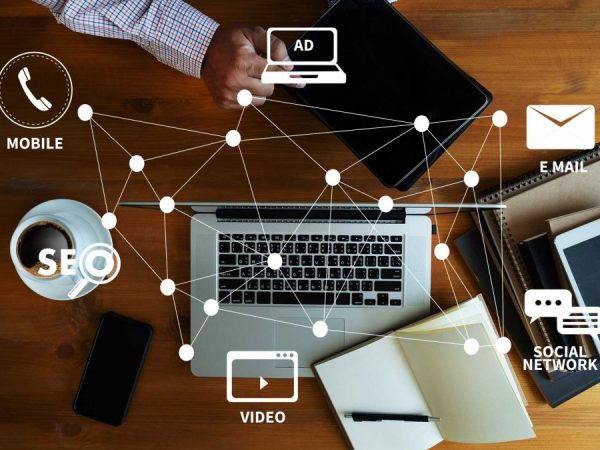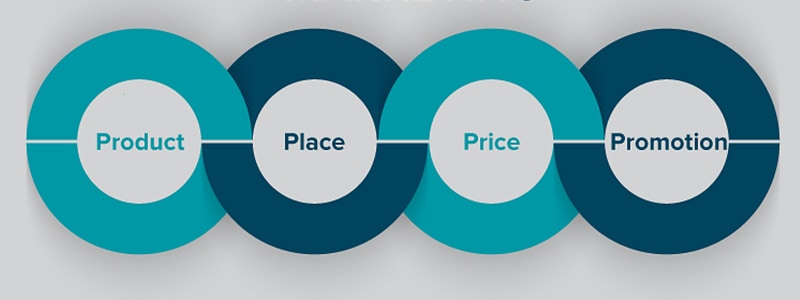Internet marketing
Internet marketing is associated with several business models.
The main models are business-to-business (B2B) and business-to-consumer (B2C). B2B consists of companies that do business among themselves, while B2C implies direct sales to the end consumer. The B2C model came first. The B2B scheme turned out to be more complex and began to operate later.
Rarer models include the consumer-to-consumer (C2C) model, where ordinary Internet users change among themselves and sell goods to each other. Examples include the eBay international auction or the Kazaa file sharing system. As well as C2B models – the seller of a product or service is an individual, and the consumer is a commercial organization.
4P features
The 4P theory in Internet marketing gets some features.
- Goods (Product) – what you sell using the Internet. It competes not only with the goods of other sites, but also with traditional stores.
- Price (Price) – most often the price on the Internet is lower than in a regular store due to cost savings, but there is a need for delivery, which is not only associated with costs, but also with transport risks.
- Promotion is a set of measures to promote a brand or product online. Includes a huge arsenal of tools (search engine promotion, contextual advertising, banner advertising, email marketing, affiliate marketing, viral marketing, hidden marketing, interactive advertising, blogging, etc.).
Place of distribution (Place) – a point of sale, for Internet marketing, a point of interaction when making a purchase decision (for example, a website, a landing page, an advertisement, a group on a social network, etc.).
Advantages
Internet marketing has a number of advantages over traditional marketing:
- Interactivity. In Internet marketing, they are actively involved in business processes. This includes participating in online surveys, building a company’s reputation through reviews, and attracting new customers. In addition, customers can perform a number of important tasks, such as placing orders, placing calls, as well as contacting online consultants;
- Personalization. If traditional marketing is aimed at the mass consumer, then Internet marketing, to a certain extent, takes into account the opinion of everyone and interacts with everyone at a convenient time for him. Also, the availability of personal information about users on the Internet allows for targeted targeting in advertising campaigns;
- Availability. Internet marketing allows you to more accurately assess the effectiveness of advertising, the number of visitors, their interests, as well as the motives that brought them to the site. In addition, online advertising is less expensive than traditional advertising.
Due to these advantages of internet marketing, its importance for businesses is increasing every year. All companies operating in the modern market can be divided into three groups, according to the degree of use of Internet marketing in their activities: traditional, mixed and fully electronic. The last group includes companies that exist only on the Internet – these are, as a rule, online stores. The activities of most companies are combined offline and online, so the second group of “mixed” is the most numerous.
Restrictions
Restrictions in online marketing create problems for both companies and consumers. If the consumer has a slow Internet connection, this leads to difficulty in using animated videos, presentation films and high-quality graphics in advertising, although, in principle, the problem with speed is a matter of time, every day there are fewer “slow” users. The place of dial-up is occupied by high-speed Internet.
The next inconvenience is that Internet marketing does not allow the consumer to try out the product before making a purchase. But most consumers solve this problem simply. They get acquainted with the goods they are interested in in a regular store, and make a purchase in an online store. Germany, for example, passed a law in 2000 (Fernabsatzgesetz, later merged with BGB) under which any customer can return an item purchased online without any explanation and receive a full refund. This is one of the main reasons why e-commerce is so developed in Germany.
The problem of the inability of the buyer to “touch” the product can also be solved in other ways, for example, some online store owners use high-quality and high-resolution product photos, trying to convey all the details and features of their products in the images. The use of special photo equipment for digitizing product images in 3D format (volumetric image) is also gaining popularity, allowing the visitor of an online store to view the product from all angles.
Another inhibitory factor is the limited payment methods that consumers trust. But, in principle, all these restrictions apply only to B2C
Safety
For both companies and consumers involved in online business, security issues are very important. Many consumers are afraid to shop online because they are not sure that their personal information will remain private. There have already been cases where companies that were engaged in online business were caught divulging confidential information regarding their customers. Some of them have declared on their websites that they guarantee the confidentiality of consumer information. By selling information about their customers, such companies violate not only their declared policy, but also the laws of several states at once.
Some companies buy information about consumers, then offer the consumer to remove this information from the database for money. One way or another, many consumers are unaware that their private information is being disclosed and cannot prevent this information from being shared between unscrupulous companies.
The issue of security is one of the main ones for companies that are serious about doing business on the Internet.
Encryption
one of the main methods used to ensure the security and confidentiality of transmitted data on the Internet
